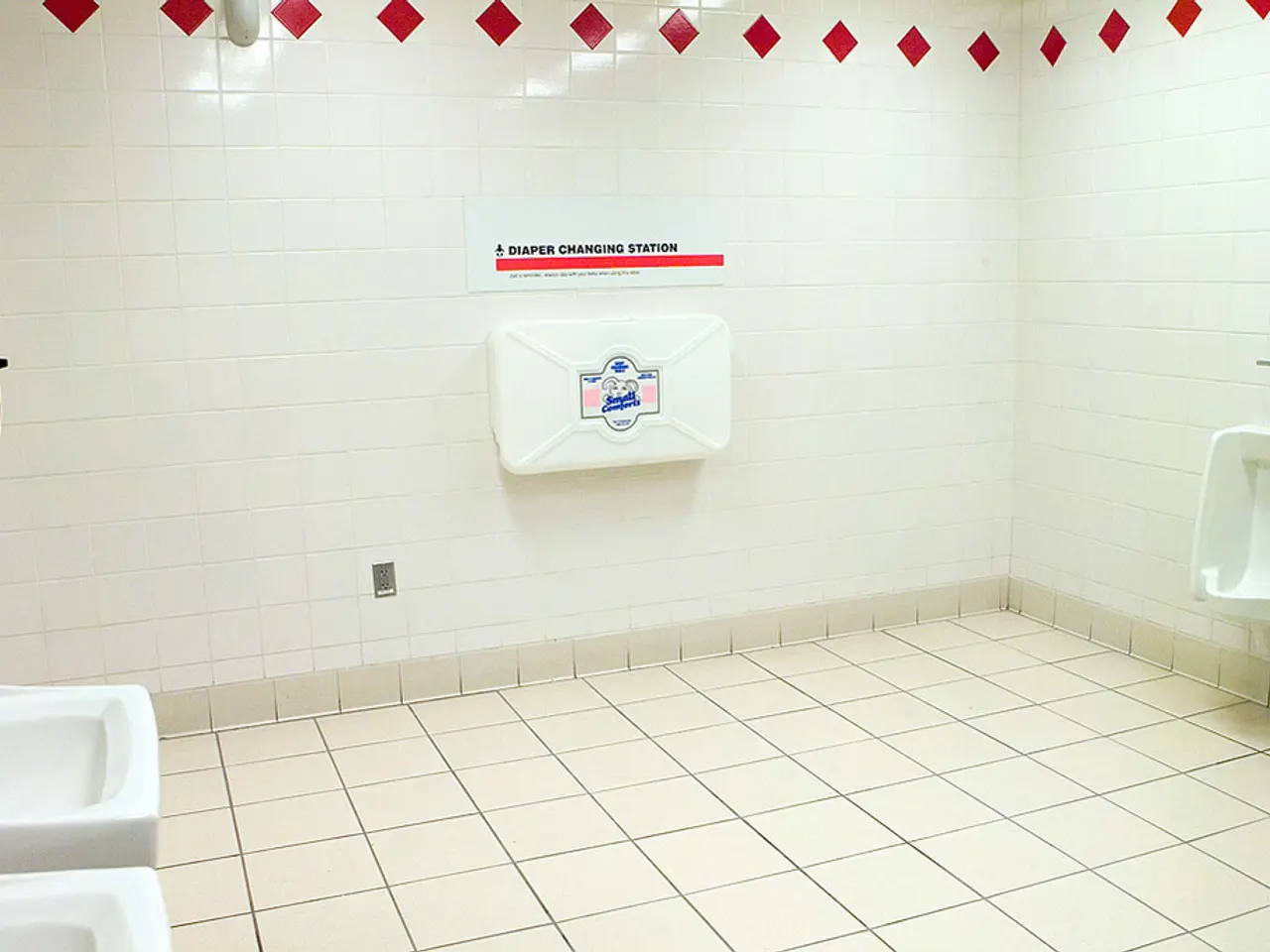Choosing Between a Double or Single Sink in a Bathroom: When to Opt for More Space and When to Keep it Compact
In the realm of bathroom design, the choice between single and double sinks can significantly impact functionality, style, and cost. Here, we delve into the key factors that come into play when making this decision.
### Space Considerations
Single sinks, with vanity widths ranging from 24 to 48 inches, are ideal for smaller bathrooms or powder rooms where space is at a premium. On the other hand, double sinks, typically requiring vanities between 48 and 72 inches wide, are more suited to larger bathrooms designed for multiple users simultaneously.
### Cost Factors
Single-sink vanities tend to be smaller and less expensive, both in terms of the vanity itself and installation costs. This is due to reduced plumbing requirements and countertop area, resulting in lower material and labor expenses. Conversely, double-sink vanities increase costs due to their larger size and the need for additional plumbing fixtures.
### Bathroom Design Styles
Single sinks promote a simpler, cleaner look and offer more counter space when compared to double sinks on similarly sized vanities. They are easier to clean because there is less surface area and fewer fixtures to maintain. Double sinks, however, fit well in master bathrooms or family bathrooms where functionality for two users at once is desired. They support a symmetrical and balanced design aesthetic, often considered luxurious, although double sinks can limit countertop space between and around the sinks compared to single-bowl sinks.
### Making the Right Choice
Ultimately, the choice between single and double sinks depends on bathroom size, budget, and the number of people who will use the sink area regularly. Single sinks offer efficiency and simplicity, while double sinks provide enhanced functionality and style for shared spaces.
To complement double basins, consider using traditional-style faucets, such as cross-handles or lever taps. Shamila Iqbal, director at Bathroom Mountain, suggests a minimum width of 120cm for a double basin, with a recommended width of 150-180cm for an optimal user experience.
Single sinks are ideal for smaller bathrooms or ensuites, cloakrooms, or downstairs loos, and guest bathrooms. Jorge Hernandez, head of product design at Burlington Bathrooms, comments that double basins can help prevent delays during busy mornings, particularly in larger households. However, double basins may not be suitable for smaller bathrooms or compact ensuites, as they can make the room feel cluttered, especially in spa-style or minimalist bathrooms.
Homeowners can incorporate the trend for double basins in a traditionally styled bathroom by selecting design elements that blend modern functionality with classic aesthetics. Bathroom storage ideas and solutions will be more generous when it comes to most double sinks, as more space can be used for drawers or shelves. A double basin allows each person their own space to get ready, making it increasingly popular in ensuites and family bathrooms.
However, double basins typically require more complex plumbing configurations, which may make them impractical if the existing plumbing doesn't allow for this without major renovations. For this reason, single sinks are great for a small bathroom remodel, particularly if the space for a vanity unit is under 120cm.
In conclusion, whether you opt for a single sink or a double basin, careful consideration of your space, budget, and personal preferences will ensure you make the right choice for your bathroom.
- In smaller bathrooms or powder rooms, single sinks with vanity widths ranging from 24 to 48 inches are ideal, making efficient use of limited space.
- Double sinks, requiring vanities between 48 and 72 inches wide, are more suitable for larger bathrooms designed for multiple users simultaneously.
- Single-sink vanities tend to be smaller, less expensive, and easier to clean compared to double sinks on similarly sized vanities, due to reduced plumbing requirements and countertop area.
- Double sinks fitted in master bathrooms or family bathrooms can promote a symmetrical and luxurious design aesthetic, although they may limit countertop space.
- When considering a double basin, traditional-style faucets such as cross-handles or lever taps can complement the design, and a minimum width of 120cm is suggested for optimal user experience.
- Homeowners can incorporate double basins into traditionally styled bathrooms by blending modern functionality with classical aesthetics, which often allow for more generous storage solutions.
- For a small bathroom remodel, particularly if the space for a vanity unit is under 120cm, single sinks are a practical choice due to their simpler plumbing configurations.




